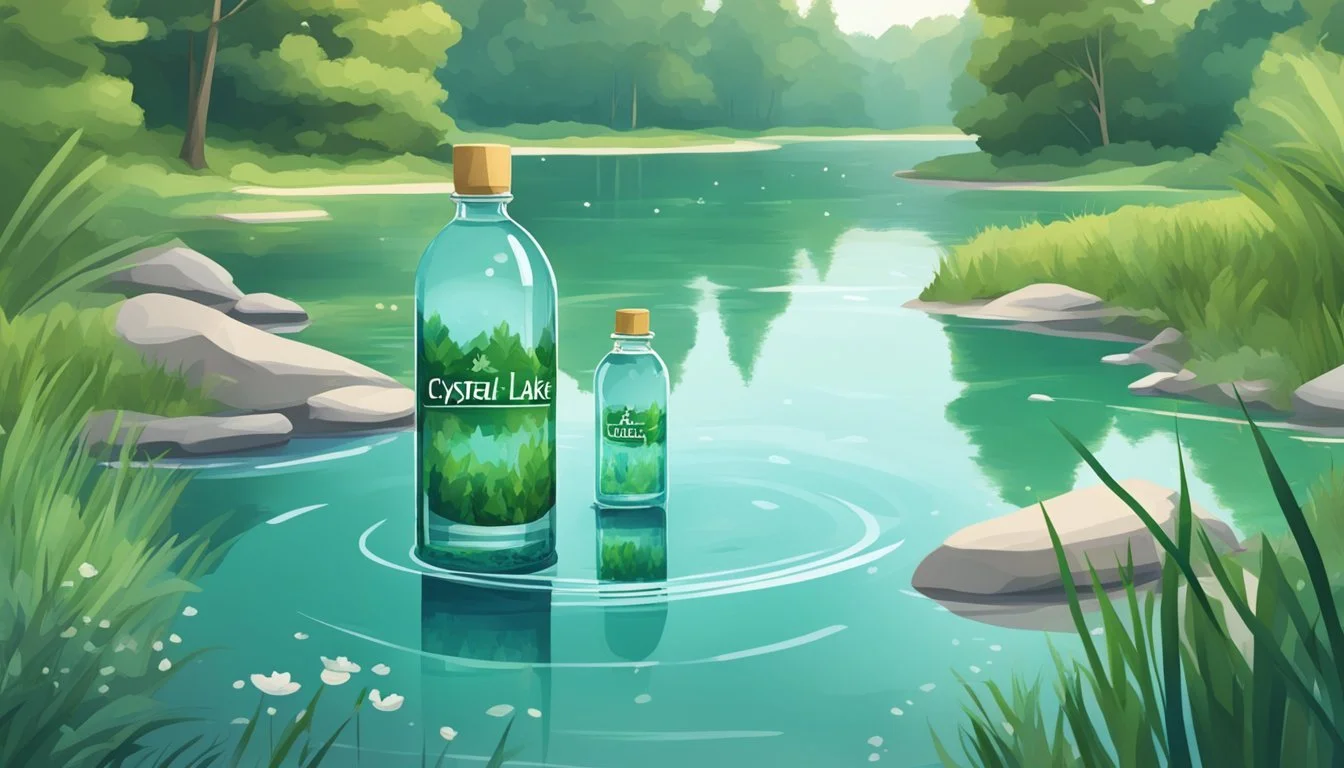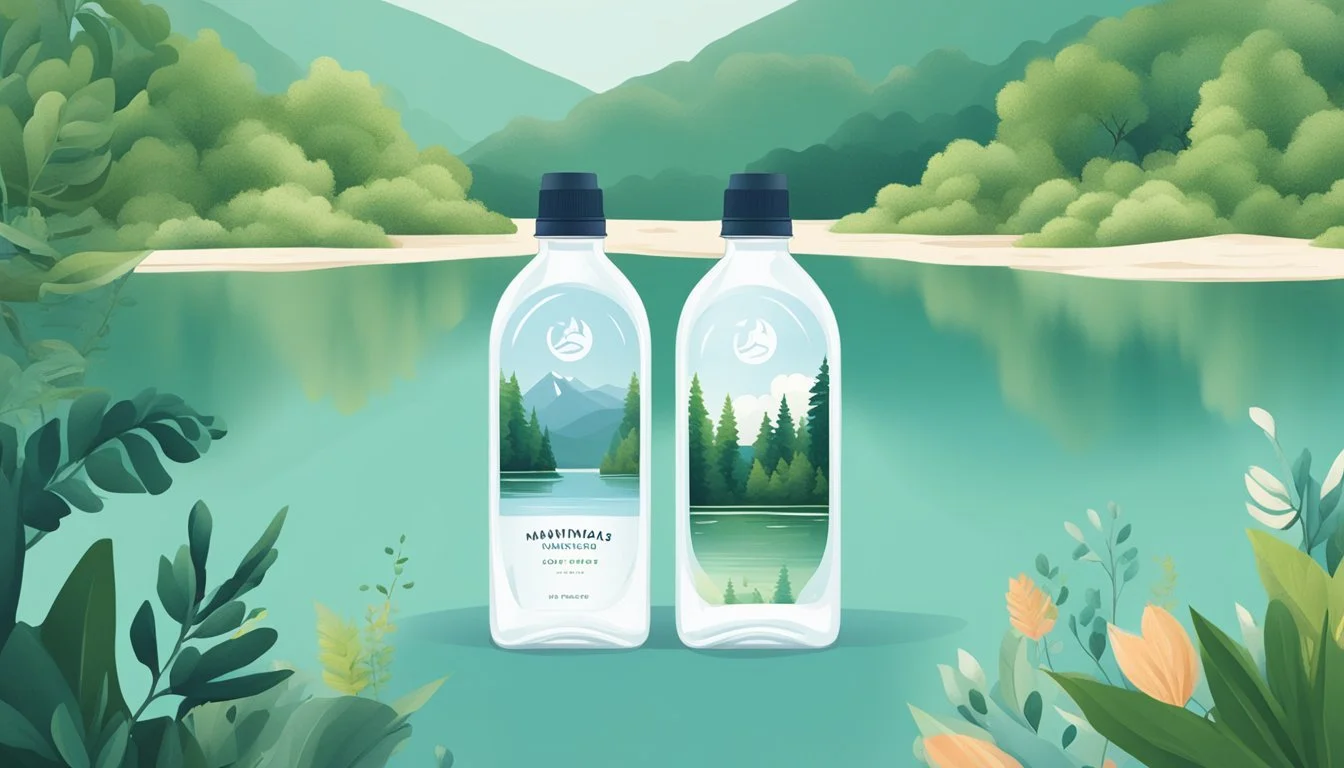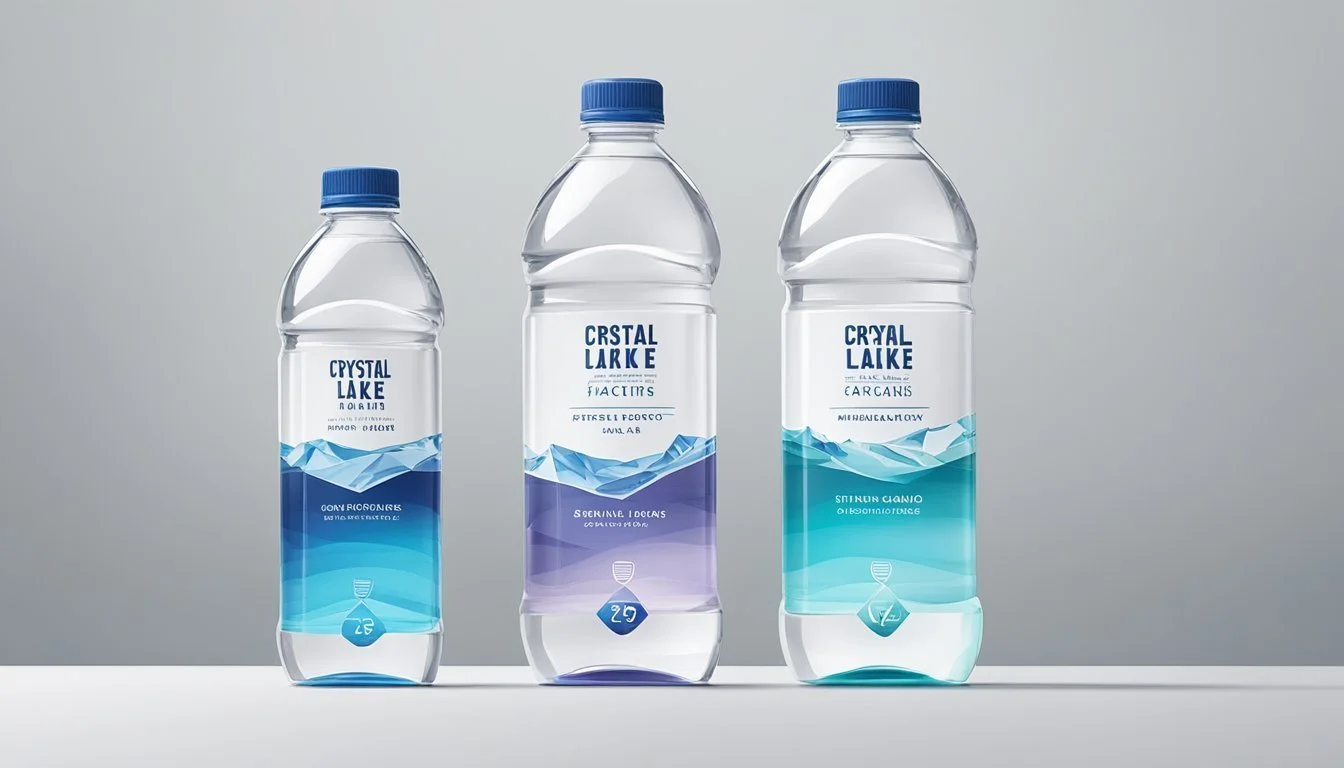Crystal Lake vs. HFactor
Comparing the Best Bottled Water Brands
When choosing between Crystal Lake and HFactor, consumers often wonder which bottled water offers better quality and value. Crystal Lake boasts a reputation for pure and clean taste, free from any plastic residue that can sometimes mar other brands. HFactor, on the other hand, sets itself apart with its hydrogen-infused formula that claims to offer antioxidant benefits.
Crystal Lake remains a favorite for those who prefer a straightforward, refreshing drinking experience without any additives. In contrast, HFactor appeals to health enthusiasts looking for a potential edge in hydration and wellness through its unique infusion process. Understanding these distinctions can make all the difference for consumers seeking to make an informed decision.
Each brand brings its own strengths to the table, making the choice highly dependent on individual preferences and needs. With Crystal Lake's dependable purity and HFactor's innovative approach, readers are encouraged to weigh the benefits of both to find the ideal water for their lifestyle.
Understanding Bottled Water
Bottled water comes in various forms, each with distinct characteristics. Ensuring the water's safety and quality involves stringent regulations and standards.
Types of Bottled Water
Spring Water: Derived from underground formations, spring water must flow naturally to the earth's surface. It retains the natural minerals from its source, which can affect taste and nutrient content.
Mineral Water: Contains at least 250 parts per million of total dissolved solids. The minerals come from the source of the water and can include substances like calcium, magnesium, and sodium.
Purified Water: Undergoes processes such as distillation, deionization, or reverse osmosis. These methods remove impurities like chemicals and pathogens, producing high-purity water. Brands often add minerals back for taste.
Regulations and Safety Standards
Bottled water is regulated by the FDA in the United States. The FDA's standards ensure that bottled water must meet similar safety and quality standards as tap water regulated by the EPA.
International Bottled Water Association (IBWA): This trade association imposes additional rigorous standards on its members. They must undergo regular inspections and adhere to strict production practices.
Quality Reports: Bottled water companies are required to provide annual quality reports. These reports detail the water source, purification processes, and contaminant levels, ensuring transparency and consumer safety.
Bottled water brands must comply with various safety protocols to minimize contamination. Regular testing for microbial, chemical, and radiological hazards ensures the highest standards of purity and safety.
Probing the Brands: Crystal Lake and HFactor
Crystal Lake and HFactor both position themselves as premium bottled water brands. This analysis examines their histories, market presence, and water collection practices to better understand the differences between them.
Brand History and Presence
Crystal Lake is renowned for its long-standing history in the bottled water industry, tracing its roots back to the early 1900s. The brand has built a strong market presence through emphasis on pure, natural spring water sourced directly from protected natural springs. Crystal Lake offers a variety of bottled water options, making it a versatile choice for consumers.
HFactor is relatively newer, founded in the early 2010s with a focus on innovation. The brand is known for hydrogen-infused water, aiming to offer both hydration and potential health benefits. HFactor has gained attention for its crisp taste and sleek packaging, making it attractive to modern consumers.
Source and Water Collection Practices
Crystal Lake sources its water from natural springs located in remote, pristine areas. These sources are protected to ensure water purity and quality. Their collection practices adhere to strict environmental regulations, maintaining the natural balance of their source locations. Crystal Lake's water is minimally processed to retain its natural minerals and taste.
HFactor, on the other hand, uses purified water infused with molecular hydrogen. Their process involves naturally occurring hydrogen production technology, ensuring the water is free from contaminants. HFactor's water sources undergo rigorous testing and purification before hydrogen infusion, making sure that the water remains clean and pure throughout the process. This innovative approach caters to a niche market interested in potential health benefits beyond hydration.
Water Quality and Composition
Crystal Lake and HFactor offer distinct characteristics when it comes to water quality and composition. Understanding the qualities of pH and alkalinity, mineral content and electrolytes, and testing for contaminants helps in making an informed decision.
pH and Alkalinity
pH levels measure the acidity or alkalinity of water. Crystal Lake typically boasts a neutral pH level of around 7, which aligns with most natural water bodies.
HFactor, on the other hand, features a slightly alkaline pH of about 8 to 9.
Alkaline water enthusiasts believe that higher pH water can neutralize acid in the bloodstream and boost metabolism. While both Crystal Lake and HFactor offer refreshing hydration, those looking for alkaline properties may prefer HFactor.
Mineral Content and Electrolytes
Mineral content plays a vital role in water quality. Crystal Lake water contains essential minerals like magnesium and calcium, contributing to its crisp taste and potential health benefits. These minerals help in maintaining bone health and muscle function.
HFactor is notable for its hydrogen-infused water, which is believed to offer antioxidant properties. Although it has fewer minerals compared to Crystal Lake, HFactor focuses on offering hydrogen as the primary beneficial component.
For those prioritizing mineral intake, Crystal Lake may be the preferred choice, while HFactor appeals to those seeking the benefits of hydrogen.
Testing for Contaminants
Ensuring water is free from contaminants is crucial for health and safety. Crystal Lake implements rigorous testing standards to avoid contaminants like lead, heavy metals, and arsenic. Their regular testing protocols ensure the water meets safety regulations and is free from harmful substances.
HFactor also adheres to strict quality control measures, frequently testing for a wide range of potential contaminants. This includes monitoring levels of pollutants and maintaining purification processes to deliver clean and safe water.
By adhering to high testing standards, both brands ensure their water is safe for consumption, though Crystal Lake's emphasis on traditional mineral content and HFactor's focus on hydrogen provide different points of attraction for consumers.
Health, Hydration, and Taste
Crystal Lake and HFactor bottled waters provide different experiences in terms of hydration, health benefits, and taste. This section delves into their hydration and health benefits, taste profiles, and results from comparative taste tests.
Hydration and Health Benefits
Crystal Lake is marketed as a premium bottled water similar to Smartwater. It typically contains added electrolytes. Electrolytes play a crucial role in maintaining hydration levels, which can benefit individuals with higher hydration needs, such as athletes.
HFactor promotes itself as hydrogen-infused water. Some claim hydrogen-enriched water offers antioxidant benefits and improved muscle recovery. Clinical data supporting these claims is limited, but the marketing targets health-conscious consumers.
Both waters serve basic hydration needs effectively. While HFactor is suggested to provide added health benefits, the scientific backing remains minimal. Crystal Lake’s electrolyte content may help in replenishing essential salts lost through sweat.
Taste Profiles
Taste is subjective but crucial in choosing bottled water. Crystal Lake has a clean, crisp taste, likely enhanced by its added electrolytes. Many people find it refreshing and comparable to higher-priced premium brands without an overwhelming mineral taste.
HFactor, on the other hand, has been noted for having a unique taste, described by some as sour or milk-like. This taste can be off-putting for some consumers, while others may not find it as noticeable or may even acquire a taste for it.
Crystal Lake's more neutral and traditional taste might appeal to a broader audience. HFactor’s distinct flavor profile could attract niche markets looking for water that's considered unique or different.
Comparative Taste Tests
In various taste tests, Crystal Lake often rates higher due to its neutral, refreshing taste. Participants praise its similarity to popular premium bottled waters.
HFactor receives mixed reviews in comparative taste tests. Some testers appreciate its unique flavor, while others find the sour note unpleasant.
Here is a quick comparison of taste preferences from taste tests:
Brand Preferred For Crystal Lake Clean, traditional taste HFactor Unique taste, niche appeal
This comparison highlights the subjective nature of water taste, where personal preference plays a significant role. Crystal Lake's broad appeal holds strong, while HFactor divides opinions based on its unique flavor.
Environmental and Economic Factors
When choosing between Crystal Lake and HFactor, two critical aspects to consider are their environmental impact and cost.
Plastic Use and Environmental Impact
Crystal Lake and HFactor significantly differ in their plastic use. Crystal Lake often uses single-use plastic bottles, which contribute to environmental pollution. These bottles can take hundreds of years to decompose and often end up in oceans and landfills.
HFactor, on the other hand, pioneers more sustainable practices by promoting reusable bottles. This approach reduces plastic waste and fossil fuel consumption. Additionally, the CO2 emissions from producing single-use plastic bottles for Crystal Lake are substantially higher compared to HFactor's minimalistic packaging.
Cost Comparison
The cost of bottled water varies between Crystal Lake and HFactor. Crystal Lake is typically less expensive, making it a popular choice for budget-conscious consumers. Prices for a single-use bottle are lower, but there’s an environmental cost involved.
HFactor, despite being more expensive, could be considered a more economical long-term choice due to its focus on reusable packaging. Initial costs for HFactor bottles might be higher, but they offer savings over time as they can be refilled multiple times. For those prioritizing environmental sustainability, the higher upfront cost may be justifiable.
Consumer Information and Choices
When choosing between Crystal Lake and HFactor, consumers should consider aspects like labeling and brand claims along with availability and accessibility. These factors can significantly impact a consumer's decision.
Labeling and Brand Claims
Crystal Lake and HFactor provide detailed labels that guide consumer choices. Crystal Lake emphasizes natural spring water, highlighting its purity and mineral content. Their labels list specific source locations, reassuring consumers of the water's origins. Brand claims focus on hydration benefits and the absence of contaminants, aligning with health-conscious users.
HFactor markets itself differently, highlighting its hydrogen-infused technology. The label promotes antioxidant properties, claiming enhanced recovery benefits. It caters to an athletic audience, stressing performance and wellness. Both brands are transparent, with easy-to-read labels detailing their unique selling points, helping consumers make informed decisions based on preferences and needs.
Availability and Accessibility
Crystal Lake is widely distributed, found in major grocery chains and online platforms. Its affordable pricing and bulk purchase options make it accessible for daily use. This widespread availability ensures consumers can consistently purchase Crystal Lake water.
HFactor, while less ubiquitous, is strategically available in specialty health stores and gyms. Its niche appeal may limit availability, but it can be purchased via their website and select retailers. Pricing is a bit higher, reflecting its specialized features. Consumers interested in hydrogen-infused water might need to seek specific outlets or online sources to access HFactor.
Conclusions
Crystal Lake and HFactor both offer unique bottled water experiences, catering to different preferences and needs.
Crystal Lake water is often praised for its clean, crisp taste. It comes from a natural source and undergoes minimal processing. This makes it appealing to those who prefer a more traditional, natural water.
HFactor, on the other hand, emphasizes health benefits. It is hydrogen-infused, which may offer potential antioxidant properties. This makes HFactor attractive to health-conscious consumers looking for more than just hydration.
Price can be a deciding factor. Crystal Lake tends to be more affordable but lacks some of the added benefits found in HFactor. HFactor is usually priced higher due to its specialized hydrogen infusion process.
Availability varies by region. Crystal Lake is widely distributed and easily accessible in many stores. HFactor might be harder to find, but can be ordered online.
Key Factors:
Taste: Crystal Lake is natural and crisp; HFactor may have a slightly different taste due to hydrogen.
Health Benefits: HFactor offers potential antioxidant benefits.
Price: Crystal Lake is generally cheaper.
Availability: Crystal Lake is more accessible in stores.
Bottom Line: If a clean, natural taste and easy accessibility are priorities, Crystal Lake is a solid choice. For those seeking potential health benefits and willing to pay a premium, HFactor stands out.
Both brands have their strengths and can cater to various consumer needs. The best water depends on individual priorities, be it taste, health benefits, or price.
More About Crystal Lake
Aqua Carpatica vs Crystal Lake: Which Bottled Water is Better?
Cascade Mountain vs Crystal Lake: Which Bottled Water is Better?
Core Hydration vs Crystal Lake: Which Bottled Water is Better?
Crystal Geyser vs Crystal Lake: Which Bottled Water is Better?
Crystal Lake vs Essence pH10: Which Bottled Water is Better?
Crystal Lake vs Proud Source: Which Bottled Water is Better?
Hawaii Volcanic vs Crystal Lake: Which Bottled Water is Better?
Hawaiian Springs vs Crystal Lake: Which Bottled Water is Better?
Ice Mountain vs Crystal Lake: Which Bottled Water is Better?
Icelandic Glacial vs Crystal Lake: Which Bottled Water is Better?
Kirkland Signature vs Crystal Lake: Which Bottled Water is Better?
Liquid Death vs Crystal Lake: Which Bottled Water is Better?
Mountain Valley Spring Water vs Crystal Lake: Which Bottled Water is Better?
Nestle Pure Life vs Crystal Lake: Which Bottled Water is Better?
Poland Spring vs Crystal Lake: Which Bottled Water is Better?
Purely Sedona vs Crystal Lake: Which Bottled Water is Better?
Richard's Rainwater vs Crystal Lake: Which Bottled Water is Better?
San Pellegrino vs Crystal Lake: Which Bottled Water is Better?
Simple Truth vs Crystal Lake: Which Bottled Water is Better?
Solan de Cabras vs Crystal Lake: Which Bottled Water is Better?
Talking Rain AQA vs Crystal Lake: Which Bottled Water is Better?
Whole Foods 365 vs Crystal Lake: Which Bottled Water is Better?
Whole Foods Italian Still Mineral water vs Crystal Lake: Which Bottled Water is Better?
More About HFactor
Whole Foods Italian Still Mineral water vs HFactor: Which Bottled Water is Better?
Richard's Rainwater vs HFactor: Which Bottled Water is Better?
Mountain Valley Spring Water vs HFactor: Which Bottled Water is Better?
Kirkland Signature vs HFactor: Which Bottled Water is Better?
Icelandic Glacial vs HFactor: Which Bottled Water is Better?






